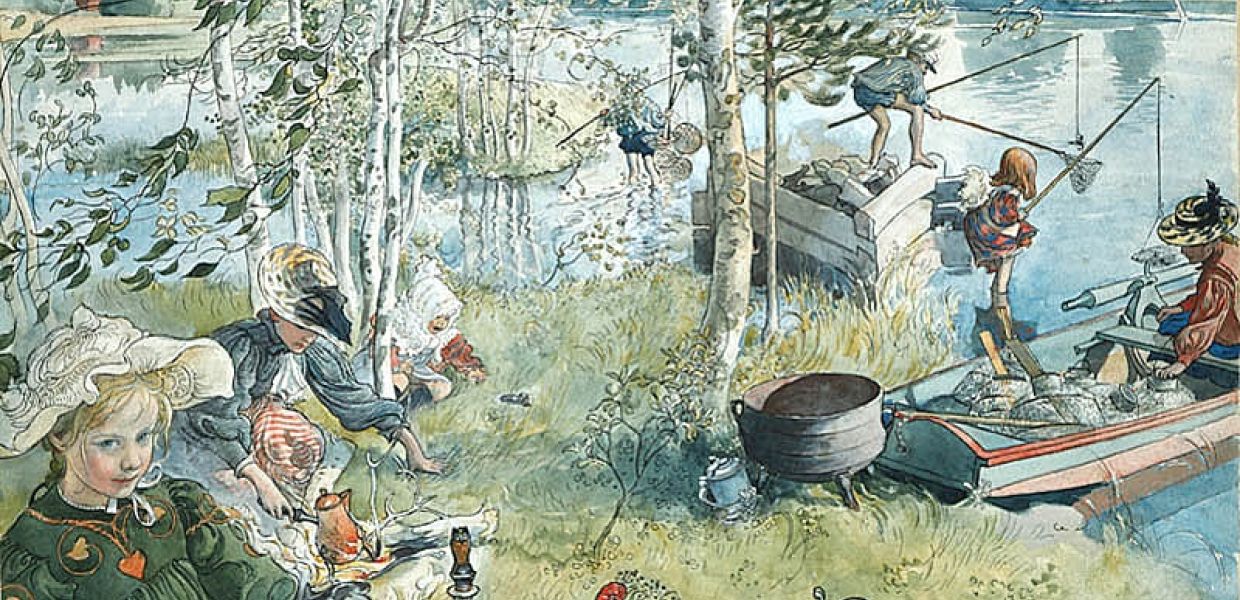Choosing a country’s top 10 artworks for Europeana 280

Choosing a country’s top 10 artworks is no mean feat. But that’s precisely what we’ve asked every European member state to do, as part of our Europeana 280 competition. Every country chooses 10 paintings that influenced Europe’s art movements - it could be masterpieces we all know and love, or lesser-known treasures that played just as crucial a role. Once all the nominations are in (there's still time to submit them!), we’ll ask the public to vote for their favourites, and we’ll create a special virtual exhibition to help celebrate the launch of the Europeana Art History channel.

Crayfish parties take place across Sweden throughout August. Kräftfångst, Carl Larsson, National Museum of Sweden. CC BY-SA
So, how do you go about whittling down hundreds of years worth of art to just a small shortlist? We’ve been talking to Karin Glaseman and Carl-Johan Olsson from the National Museum of Sweden about how they’re doing it.
Are you excited to be involved in Europeana 280? What do you like most about the idea of promoting Europe’s well-known masterpieces alongside its hidden treasures?
Karin: We like the idea of works of art becoming accessible independently from a physical visit to a museum. A digital exhibition always provides a lot of curatorial freedom, as we do not have to think about physical conditions of the works. The Europeana 280 initiative asking for works of art that contributed to European art movements also spurs some rethinking of what we consider to be important pieces of art in this context and makes us want to show pieces that the audience might not be expecting. We are very curious about what hidden treasures Europeana 280 will reveal.
You’ve decided to hold a workshop with other museums to help create the shortlist of Swedish works, why?
Carl-Johan: We have some great art collections all over the country and we are trying to ensure that we are not only highlighting one collection. We want to show the whole richness of Sweden’s art collections and we don’t want to limit ourselves by imposing rules such as only one work from each collection. We’d like to achieve a consensus in what pieces we think should be promoted in the Europeana 280 campaign.
How will you structure the day? Can you talk a bit about what it might entail, and what discussions you hope it will provoke?
Karin: We will start with a general presentation of the Europeana 280 project, the idea behind it and the effect we hope and think it can have. We have collected some 30 nominations from participating museums that we will present anonymously, without information about their origin or the collection they belong to today. We’ll complete the list with the 10 most-viewed works of Swedish art on Wikipedia. Then we’ll make an initial intuitive choice, and then go through the institutions’ reasoning about why a certain work should be part of the contribution. We hope to conclude the day with a list of artworks that everybody can relate to and we will give the museums that couldn’t come to the workshop a chance to react the following week.
We hope that the workshop will help us to see our art history as a common treasure and not as dispatched, closed collections.
We are also expecting some discussion around open licensing and will try to prove that the potential benefit of giving these works an open licence will outbalance the potential risks. We hope to conclude the day by giving the world some freely accessible pieces of art!
What aspects of Swedish culture are you most excited to share with the rest of Europe and the world? What do you hope people will learn about Sweden’s art history?
Carl-Johan: We hope to open people’s eyes to the different aspects of our collections. First and foremost, the inherent qualities of the artworks themselves such as aesthetic dimensions and their significance within sociocultural and historical contexts. A desirable result would be for this selection to stimulate and encourage explorations deeper into our digitized collections. The potential is endless, obviously!
If you have questions about Europeana 280, please contact Marie-Claire Dangerfield by emailing [email protected]
